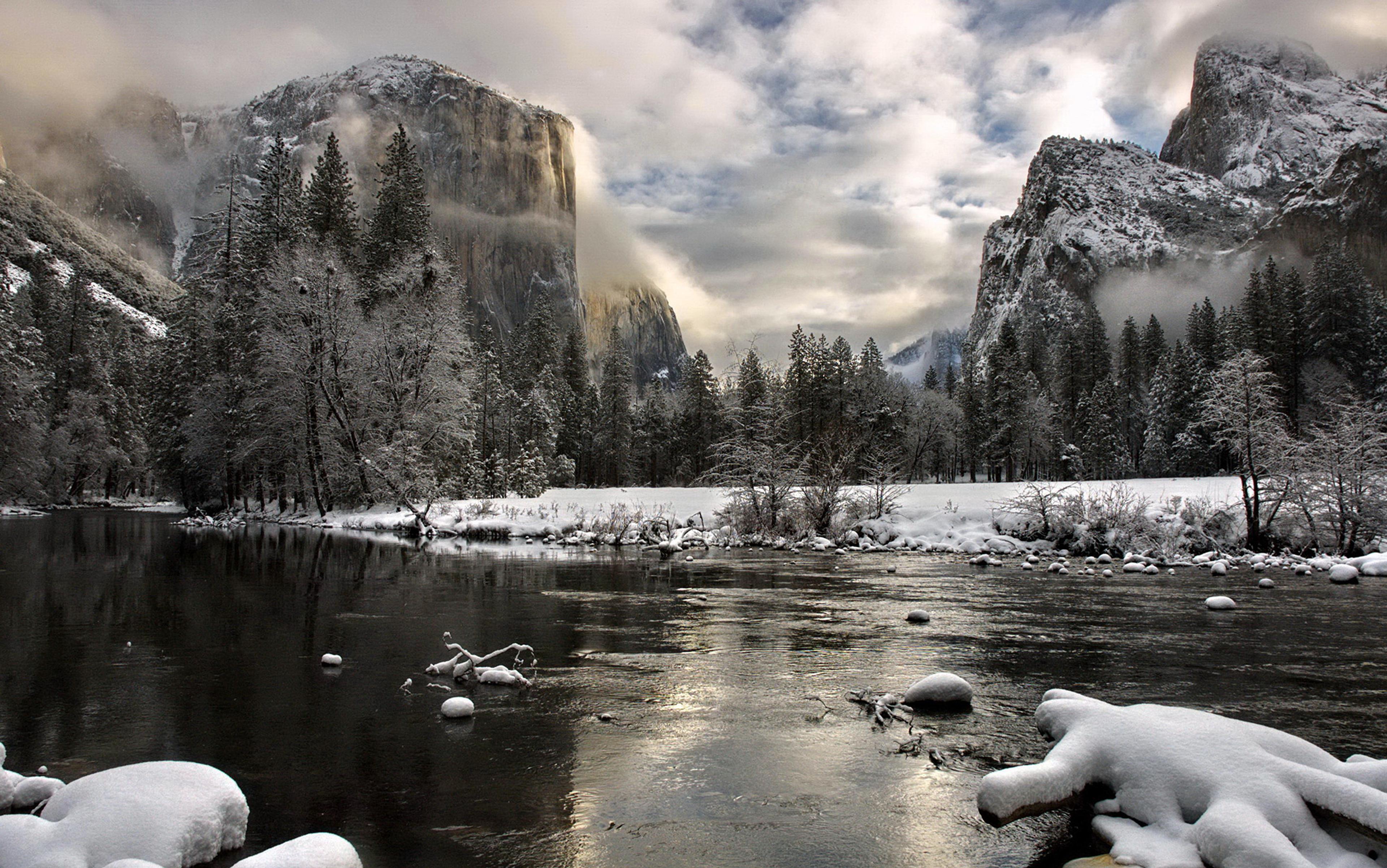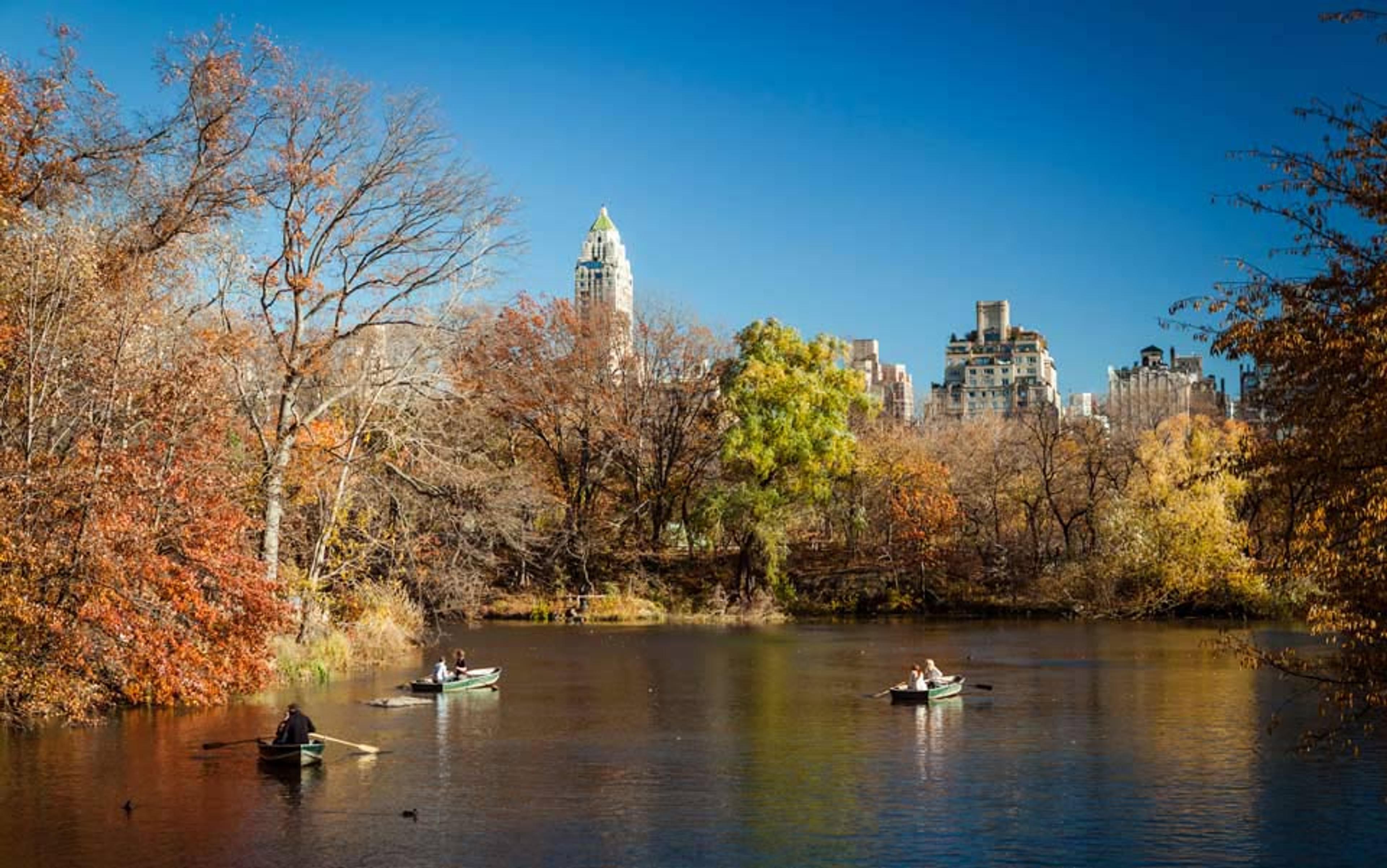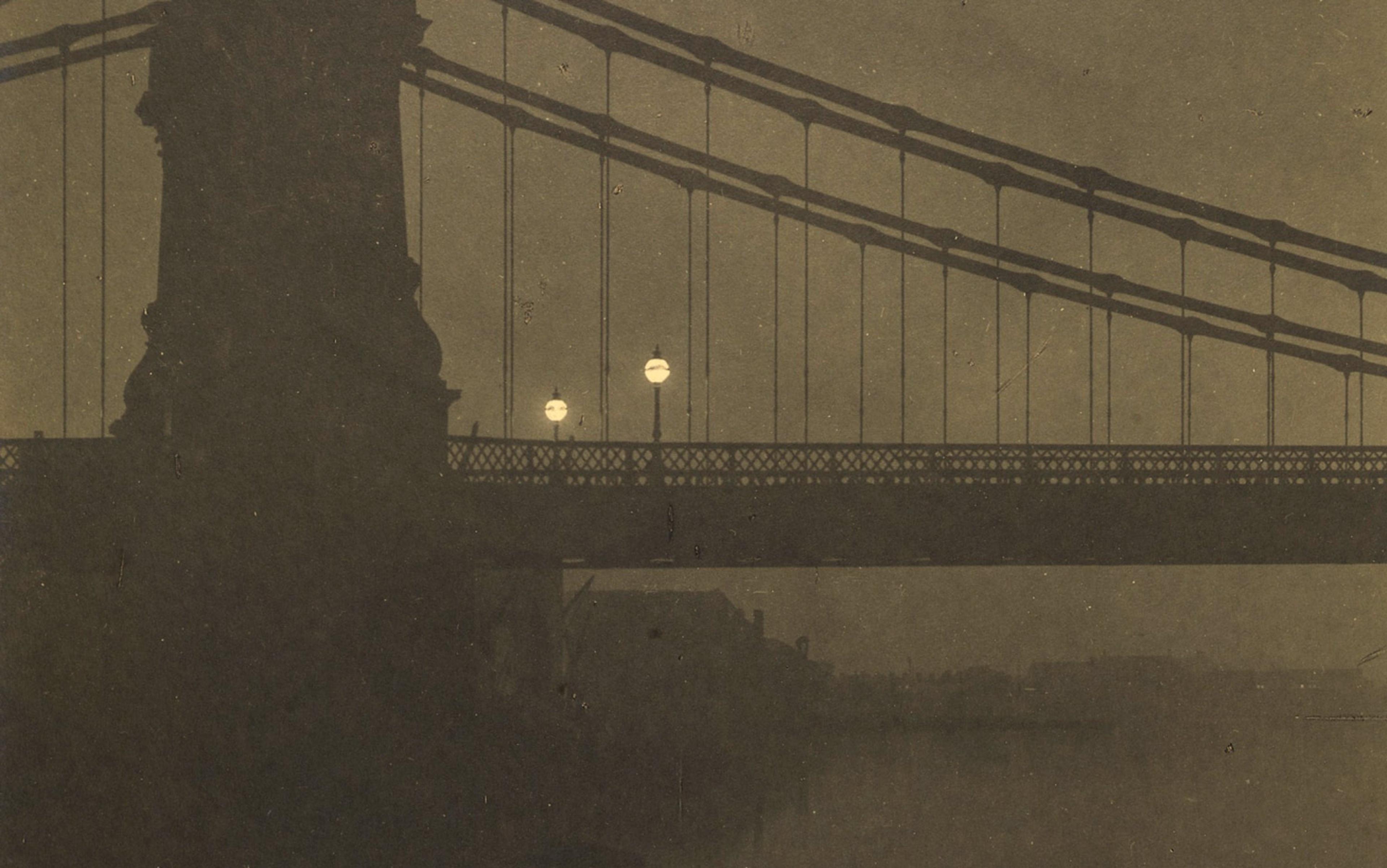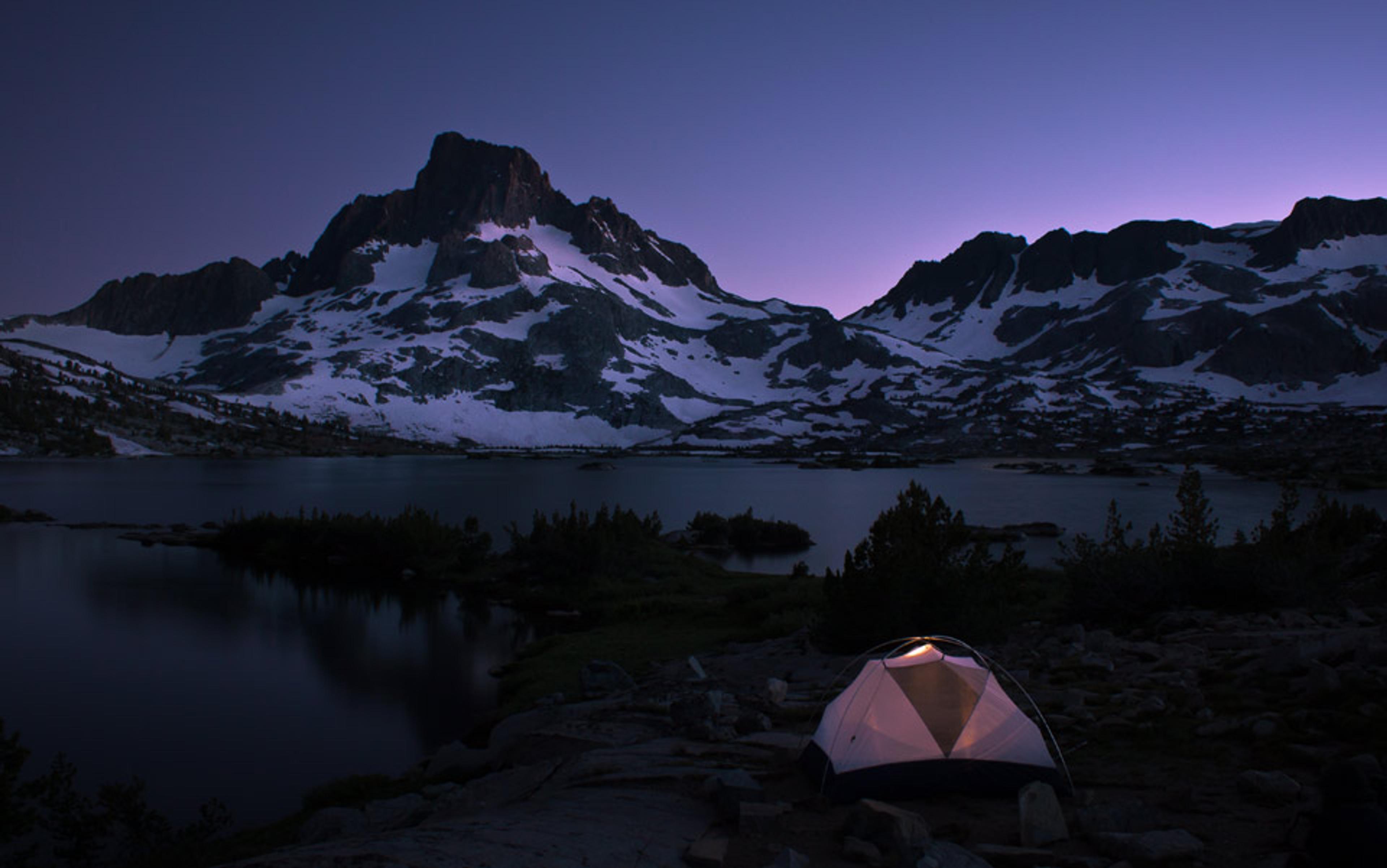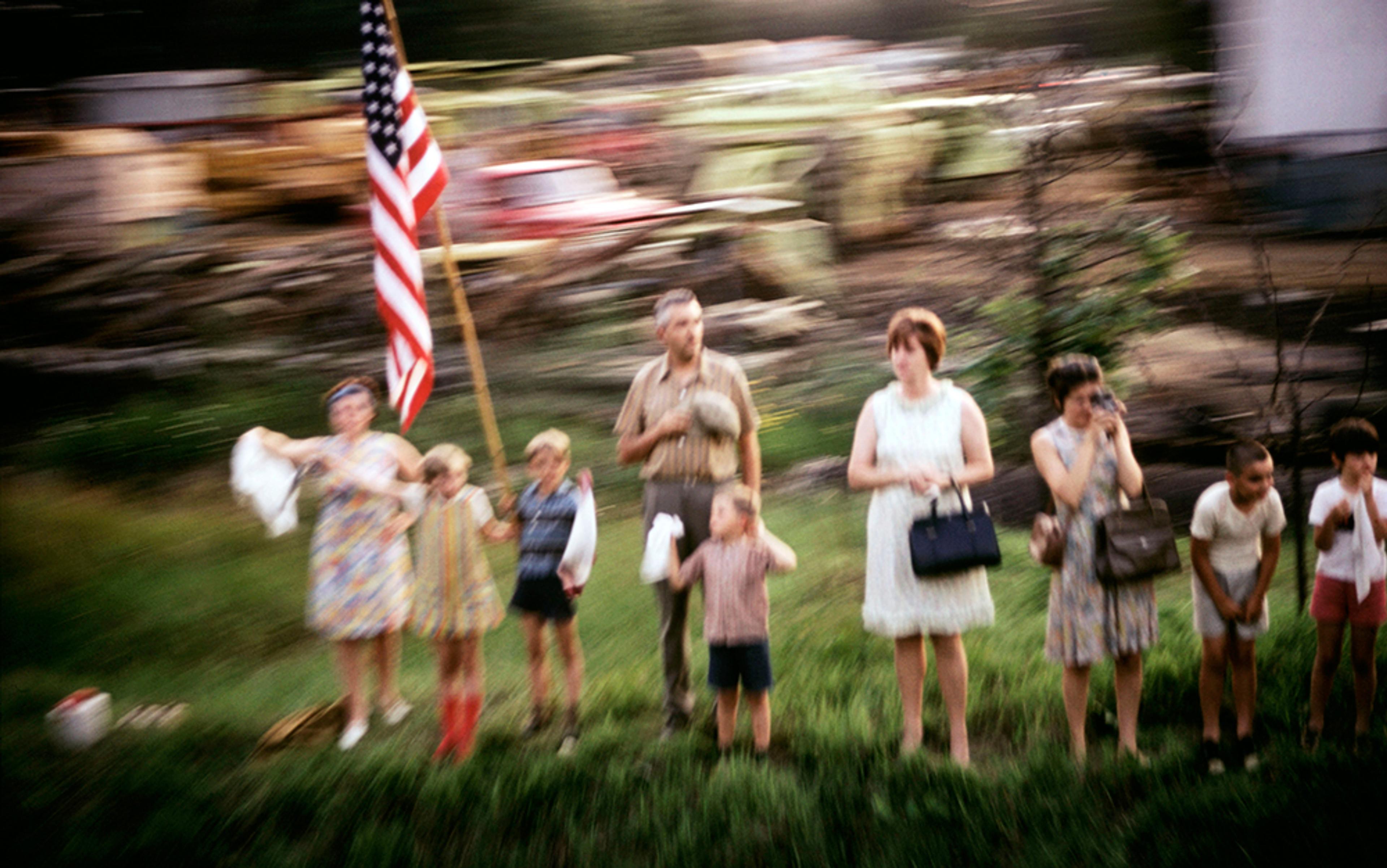I sit in an alpine lake basin and eat my lunch: cheese and crackers, lemonade, and an apple. I lay my head on my knapsack, which is almost an extension of myself. I have had it for a long time, and thanks to all of the food I have carried in it, it is an odoriferous repository of memory of peaks climbed and meadows traversed, of the sounds of meadow thrush in canyons, of canyons idled in to feel sunlight and wind on skin, to see the waning light of day and the starry light of night, and be bathed in the ambience of alpenglow. The sounds of gurgling streams — like Beethoven’s Ninth Symphony — banish all worry from the human soul.
I am acutely aware of forgetting because, after 15 years, this is my last day as a ranger-naturalist in Yosemite, and there is much I want to take with me when I leave. So I drink the light washing through this lake basin because my thirst for memory cannot be quenched. I thirst to be free from memory’s limits, which make things in Yosemite (and everywhere) ephemeral.
In Reason in Religion (1905), George Santayana struggled with the problem of how the things and experiences we witness might be made less fleeting and more enduring. Santayana thought the ephemeral, which all things are, could be made lasting by the endowment of memory, at least until our own mortal end. In Memoir From Antproof Case (1995), Mark Helprin said that the ephemeral can be made to last through devotion to that which has been loved, and that this requires the obstinacy of memory.
I want Santayana and Helprin to belay me against the inevitability of ephemerality, a plunge into things I have witnessed in this place manifest by light. I want this day along with all days in the Sierra to be fixed on the emulsion sheet of my mind.
While a ranger-naturalist, I was often asked what I most liked about Yosemite. ‘Light,’ I said. The Native Americans, who named a large part of what is now Yosemite ‘Pywiack’, meaning ‘Lake of the Shining Rocks’, knew that the permanent essence of this incomparable place is light. And the light makes Yosemite untrammelled and bright with no deprivation of freedom or imposition of convention, worthy of lasting memory. As the Italian poet Cesare Pavese wrote:
At times it returns, in the motionless calm of the day, that memory of living immersed, absorbed, in the stunned light.
Yosemite is an ephemeral place. Partly it is ephemeral in the original, Greek sense, meaning lasting for a day. Horsetail Fall in golden hibernal sunlight is seen in an early winter sunset when snowmelt and cloud cover are just right, and then disappears with no certainty about when it will return. Mayflies unpredictably swarm one day for several hours above Mildred Lake before their short adult life is spent. An early morning shaft of sunlight on a yellow monkey flower in a dark forest becomes a golden splotch of beauty, only to disappear because the sun changes its angle slightly. A Sierra wave forms after an early evening rain shower, layers of pink and orange and red and magenta spread by an enormous cloud along the Sierra crest, slowly giving way to darkening ripples by the approaching night. A seasonal flood alters riparian vegetation. The soft touch of the skin of a woman I fell in love with while lying beside her near a small stream beneath Medlicott Dome is remembered too, albeit barely. And while I remember the smell of my fellow ranger-naturalist Carl Sharsmith’s baked beans, which he cooked for dinner every night in his tent, I can remember only a few of the many stories he told me while he puffed on his old German pipe.
We looked at each other for many minutes and across evolutionary time
Half Dome and the rest of Yosemite Valley formed over a geologic speck of time and they will last until eroded away by the flow of time’s rivers. Against the measure of immortality, all things are ephemeral or ‘last for only a day’, whether mayflies or the base of Half Dome plunging deep down into the beating heart of the earth.
Parts of Yosemite are ephemeral because, unlike in the Greek sense, one’s forgetting makes the forgotten (which might still otherwise exist) no longer exist for the forgetter. And parts are ephemeral because of what we have done to the place itself.
In her latest novel, NW, Zadie Smith wrote: ‘Nothing survives its telling.’ Many years ago, shortly after I began work as a ranger-naturalist, I climbed Shepherd’s Crest and looked outward; everything was (I felt) untrammelled beauty, and I thought only about perfection and permanence. Years later, I climbed the Crest again and, while I saw beauty, I saw its demise as well.
After visiting Yosemite in the early part of the 20th century, shortly after automobiles had made their first entry into the park, James Bryce, the British ambassador to the US, said:
If Adam had known what harm the serpent was going to work, he would have tried to prevent him from finding lodgment in Eden; and if you were to realise what the result of the automobile will be in that wonderful, that incomparable Valley, you will keep it out.
Bryce was prescient about the onslaught of automobiles and how they, together with close to four million visitors annually, and the developments they desired, would conflict, for the most part, with a truly wild Yosemite. Seeing Yosemite confined and tamed by human presence and human destructiveness is one reason why Helprin was so insistent that memory required a devotion to obstinacy. Santayana suggested that (secular) faith must guide us in seeing the ideal of beauty in the face of the reality of what we have done to our precious earth.
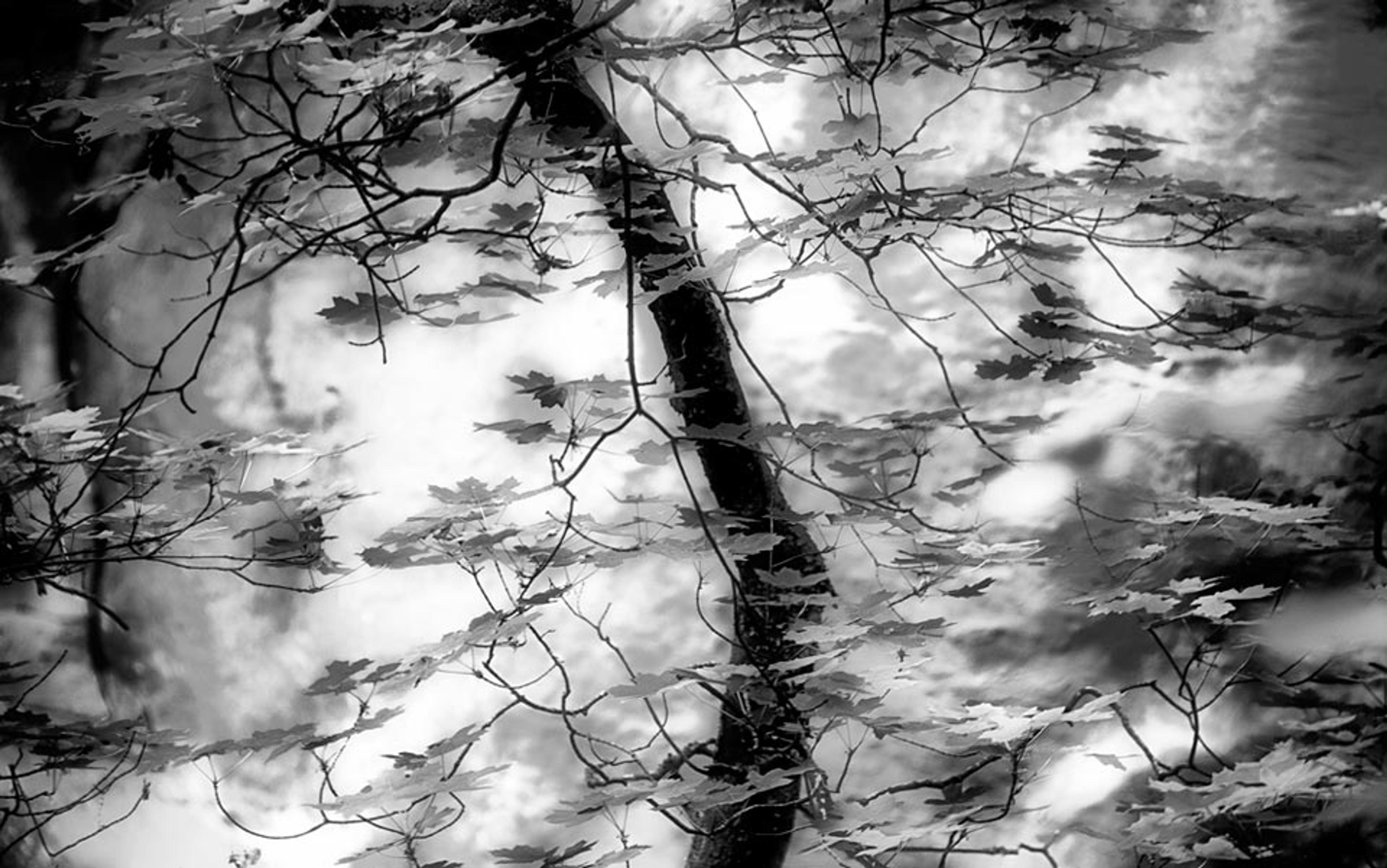
Flickering light; a tree and a canyon wall in Yosemite National Park. Photo by John Lemons
I lived in Alaska for a number of years. Once, when I was walking along Turnagain Arm during an extreme low tide, a number of beluga whales had intentionally beached themselves in the mudflats to rest from the threat of orca whales in deeper waters. I approached several belugas within a distance of about 15 feet, and was drawn deeply into their brown eyes and their smooth white skin.
Reverie is somewhere between a sweet dream and the consternation of thinking
It is strange, and I only use this word because I know of no other that might suffice, to describe looking directly and closely into a lone whale’s eye. We looked at each other for many minutes and across evolutionary time. I don’t know what the whale thought of me, but I know what I thought of him or her. These were animals I was privileged to see. I marvelled at their beauty.
And at their long lives. Belugas can live for 70 or even 80 years, which has the sorrowful consequence that mature belugas today carry persistent toxic compounds, such as DDT and PCBs, that were banned years ago. Such embodied memories carry across the generations, being passed to their young through the placenta. That silken skin of beauty concealed a story of irreparable loss.
Years after my last work day at Yosemite, I find myself sitting at a table at the Principe di Metternich in Trieste, Italy, watching the enormous ripe, blood-orange sun plunge into the Adriatic. To the south, a purple hue is cast on the coasts of Slovenia and Croatia, and to the north there is a pinkish tint on the snow — covered Dolomites. Small fishing boats circle on the water in the bay, with one or two men in each boat straining to pull in the nets with the day’s catch.
Glimmers of sunlight dance to and fro on the azure, smooth — as — glass sea, a sensuousness like the afternoon Sierra light reflected from an aspen’s smooth white bark. Or, like that of the owner of the Principe di Metternich who flits about, talking to her staff and the people eating at tables covered with red-and-white checkered tablecloths. Wine bottles are on every table, baskets of bread, fried calamari. She is classically beautiful with long black hair extending to a soft spot in her curved lower back. She is dressed entirely in black from her long dress to her stiletto heels. Black is her favourite colour. Her daughter, who looks just like a younger version of her mother, is dressed identically to her. They meet and walk intertwined arm-in-arm like stalks of swaying Delphinium on the lower slope of Mt Dana one breezy golden sunlit afternoon. I am sure that the mother looks at her daughter and thinks of what she once was, while the daughter looks at her mother and thinks of what she will become because of this thing called time. I love being in this moment, its beauty and ambience and life. And yet… a Bruce Springsteen song plays in the background: ‘You’ve gone a million miles/How far’d you get/To that place where you can’t remember/And you can’t forget?’
What orchestrates this symphony of poetic light, just as Puccini’s music lingers in my ears long after the last played note? The evening light is a provoquer of memory propelling me into a simultaneous witness of the past and present of my life, allowing me to escape the confines of forgotten time.
The sun plummets softly into the Adriatic and I feel myself slipping through its lens to almost forgotten memories of mountain days. In reverie I linger on summits. I see the vast granite valleys and ribbons of forests and streams meandering their way west; the string of summits along the Sierra crest extending from northern Yosemite all the way south of Mt Whitney; I look eastward to the ranges and basins of Nevada; I look upward to the infinite intense blue sky with a red tailed hawk becoming a distant circling mote high above.
Reverie is no small thing. As the French philosopher Raphaël Enthoven wrote recently, reverie ‘lets you see beauty without your consent and see nature without ego, invests the world with intense interest’. And, I might add, reverie lets one enjoy individual sensate astonishment for its own sake, with no regard to utility. Reverie enables the world to be seen without accompanying theories and formally acquired knowledge; it is located somewhere between a sweet dream and the consternation of thinking.
My first lingering on summits began when I was barely old enough to wear a ranger-naturalist uniform. I often walked in the early morning through streaks of sunlight in lodgepole forests; I crossed small streams emanating the night’s coolness where purple shooting stars along the banks nodded in gentle matutinal breeze; I took a bead on where I was headed and followed it without benefit of trail. Eventually, I was above timberline and reached a point, a cliff or rock wall, where I no longer could see where I was heading above from where I stood below. My last step, hopefully onto my intended summit, depended on the first. And my first depended on how well I knew this country, or how well I was coming to know it. And sometimes on jaunts such as these, a late return off the mountain bestowed the gift of seeing a rising full moon transform into a Moon Dog with its relatively rare paraselene that extends precisely 22 degrees of the night-time sky.
Sitting in the Principe di Metternich, watching the sun set, I now know that Pavese’s stunned, returned light, the light of memory, makes Yosemite — that incomparable place — as immortal as places can be.
